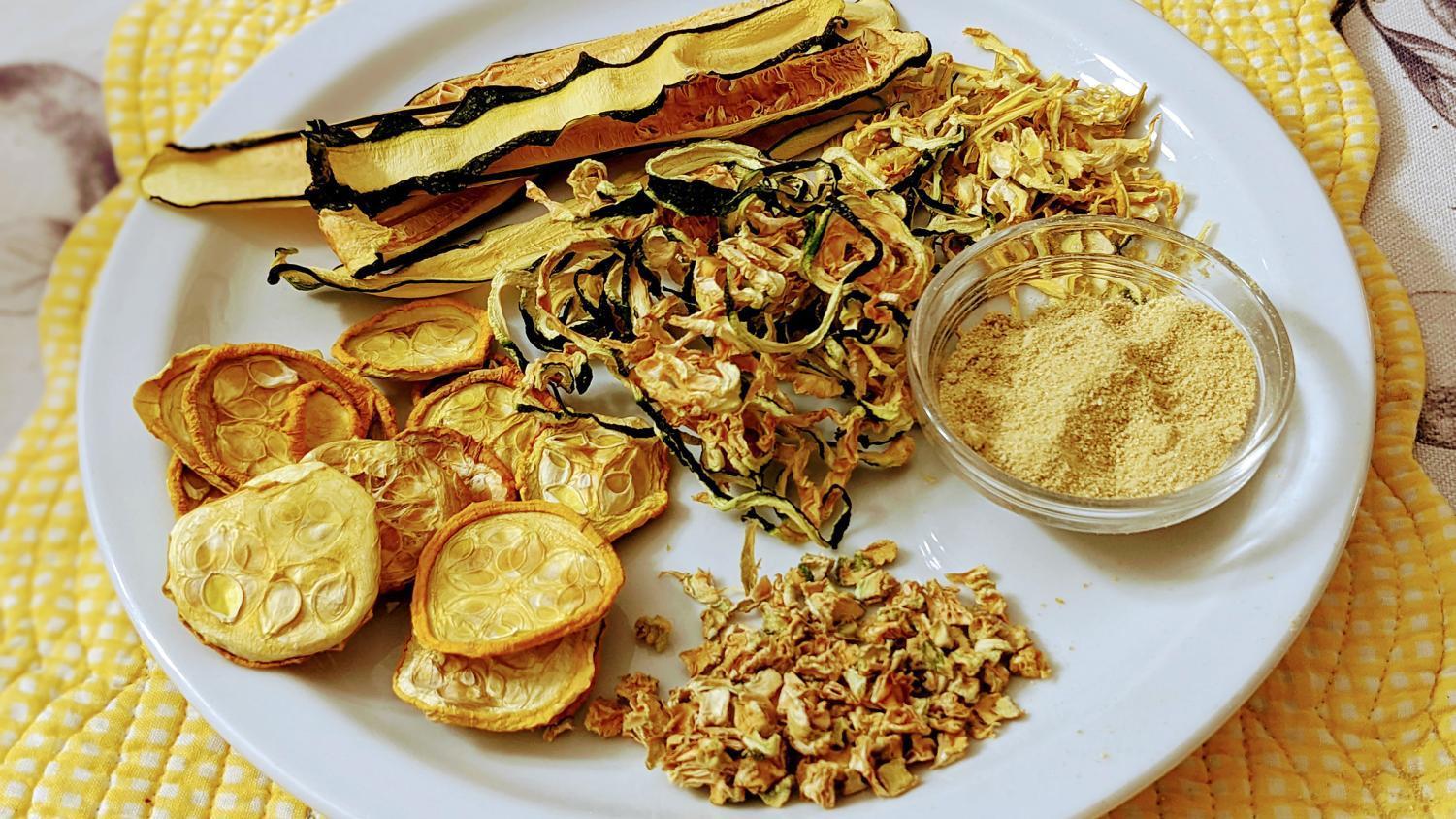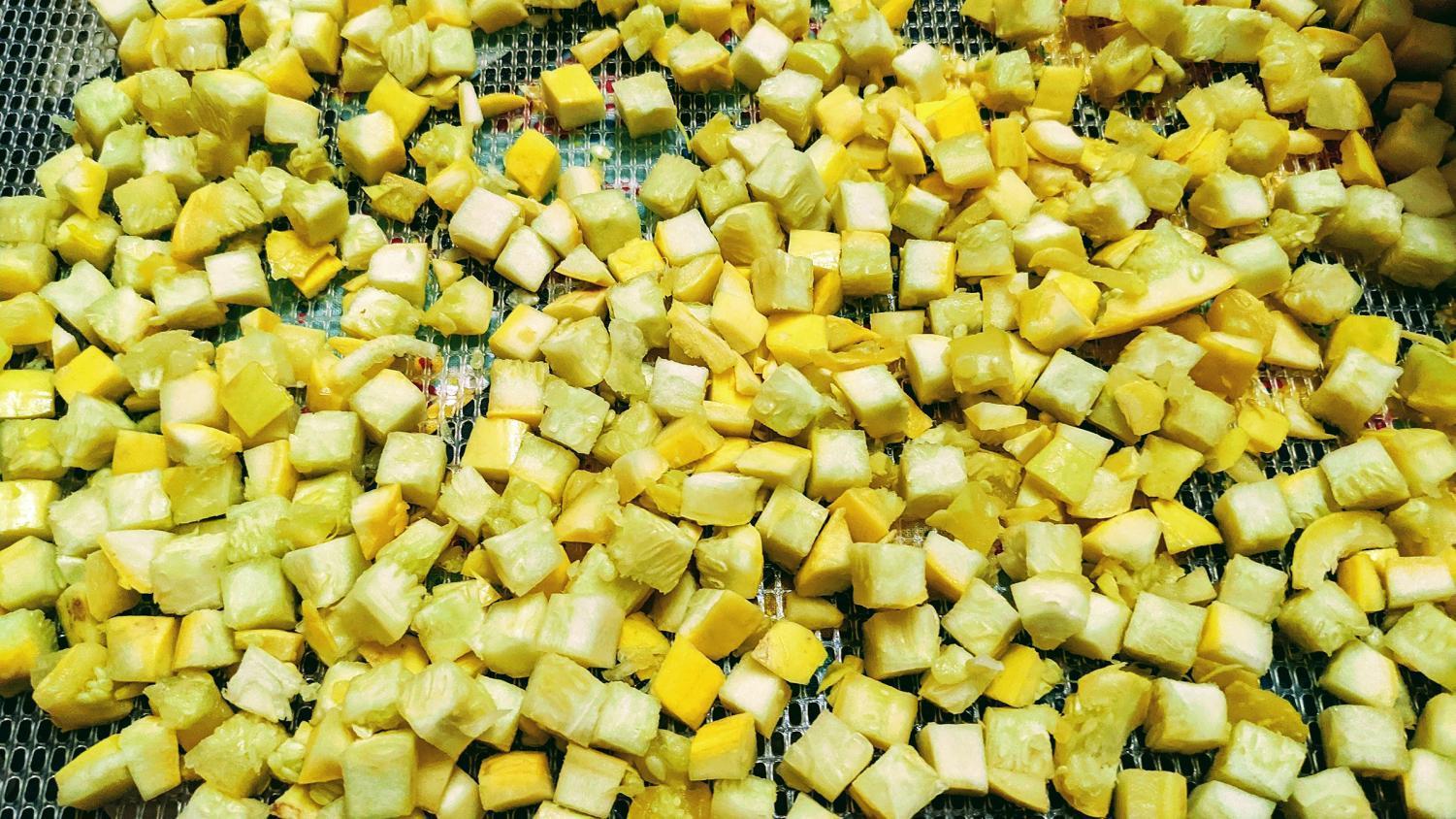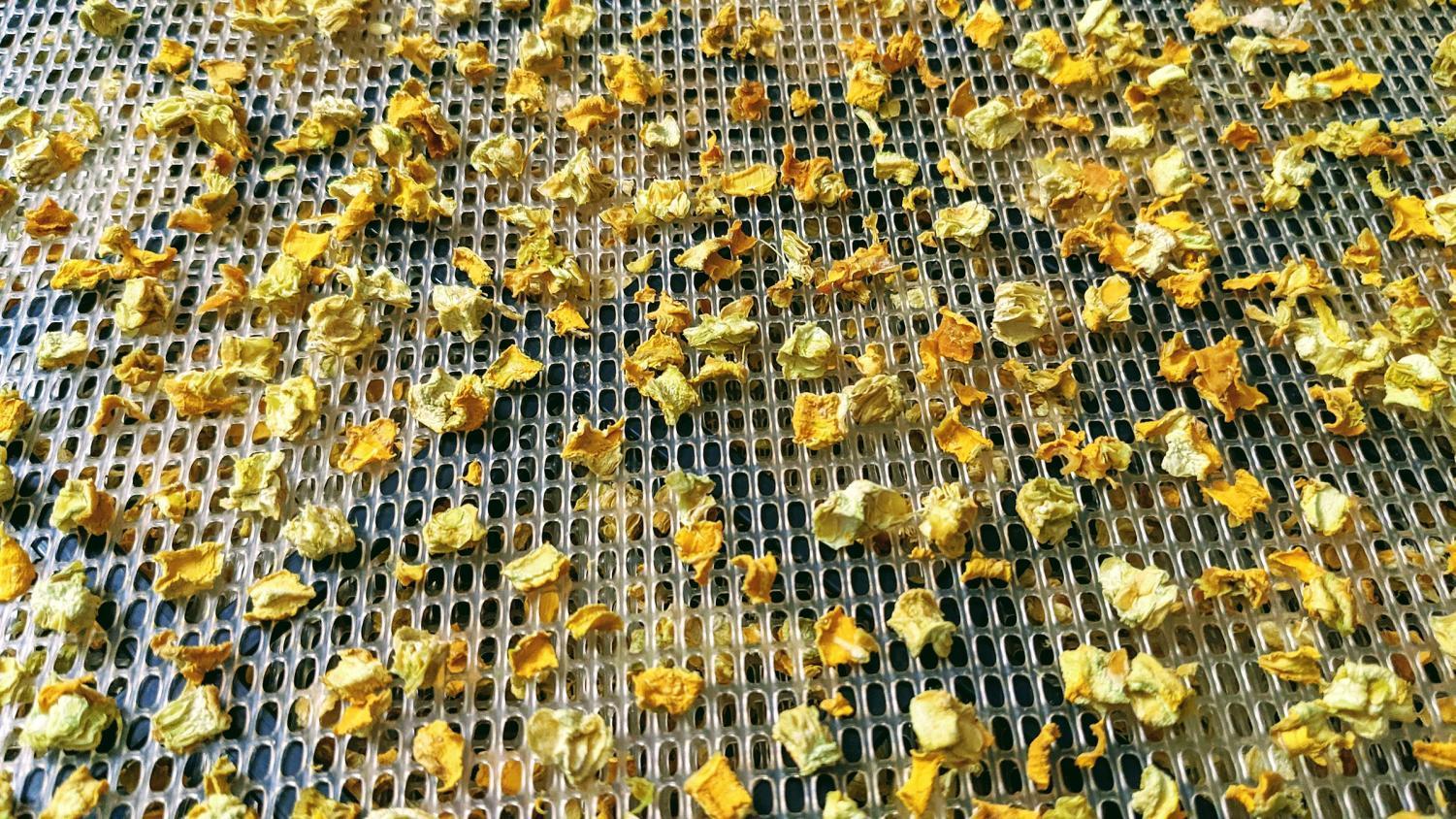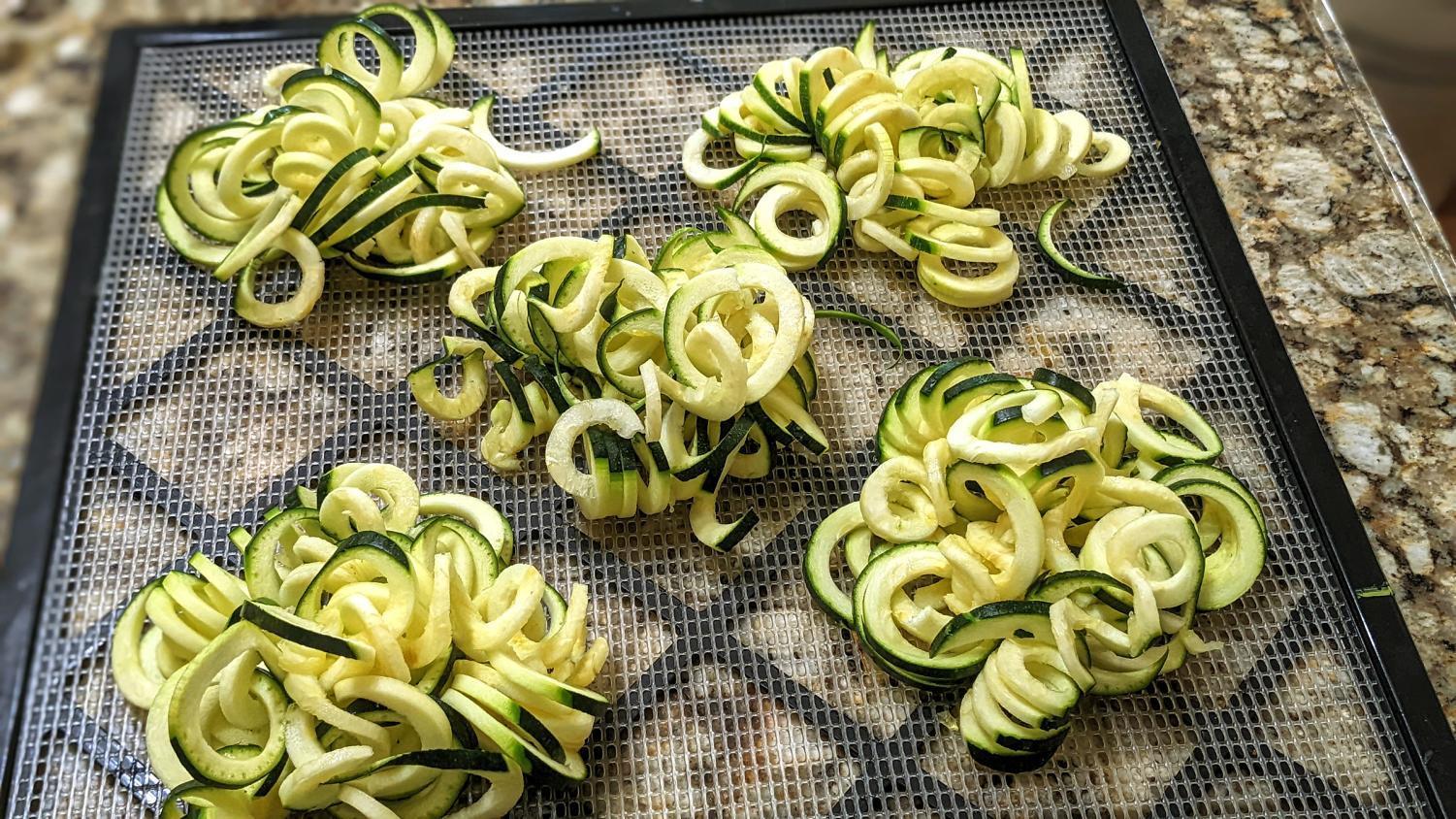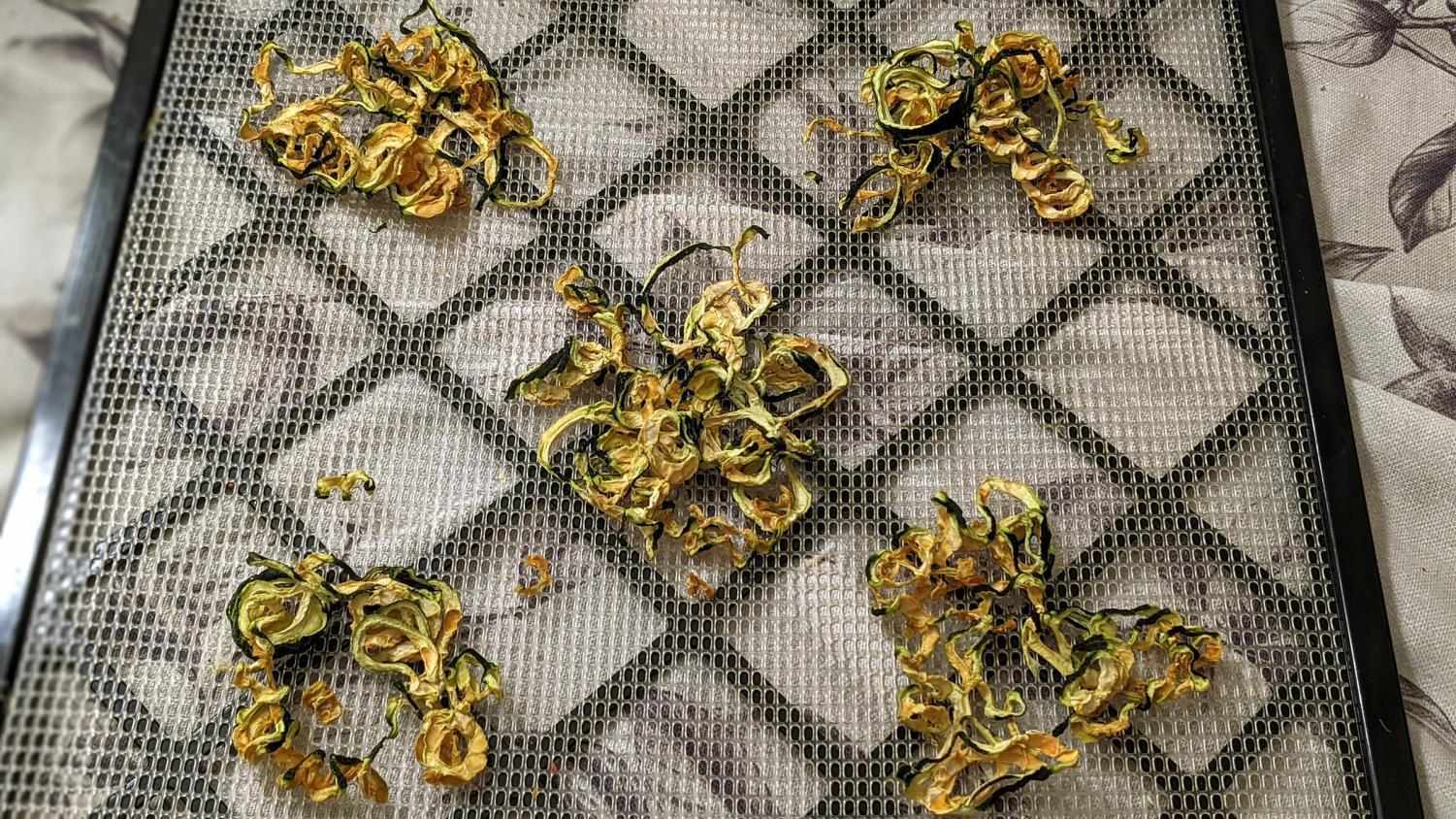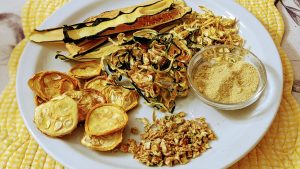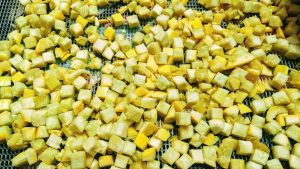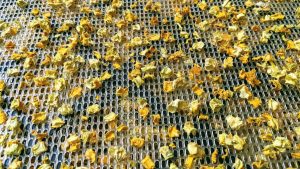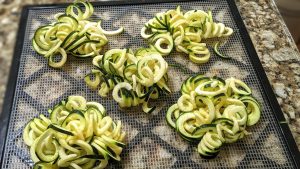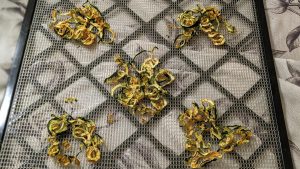Preserved Home: Squash is a summer staple full of potential
August 21, 2022
Out of all the warm weather produce, summer squash seems to either be the most abundant or the most difficult for home cooks to employ. You don’t hear lamentation of tomato overproduction like you do with summer squash. Gardeners everywhere, urgently seeking ways to escape the commitment of their bounty, embrace Aug. 8 every year, dubbed “Sneak Zucchini on Your Neighbor’s Porch Day.” The desperation is real. If you are still burdened with mounds of summer squash after pranking neighbors, consider creative ways of preserving your harvest to enjoy all year.
I remember traipsing through my garden one morning, stepping between vines and discovering summer squash, which seemed to have grown twice the size overnight. Why does squash, or “askatasquash” as Native Americans called it, grow so profusely? These plants can grow in almost any soil, flourish with little care, and flower more than other plants such as peppers.
And the more you pick, the more squash your plant will give, and one plant can yield up to 10 pounds of squash. Considering summer squash can be enjoyed in savory or sweet dishes, and preserved in a wide variety of ways, it’s a smart choice for your plot.
 The most conventional way of preserving squash is freezing. I chop squash for stir fry, shredding, and also coat slices in a flour mixture for frying later. I flash freeze the slices so they don’t stick together in the bag. Be careful to place breaded squash in the freezer where the flour coating won’t get chipped off during freezer rummaging. I typically do four gallon bags of breaded squash to get us through the year. I also pressure can shredded and sliced squash, but just know the sliced squash will not hold its shape after canning and is best for making a soup, casseroles or hushpuppies.
The most conventional way of preserving squash is freezing. I chop squash for stir fry, shredding, and also coat slices in a flour mixture for frying later. I flash freeze the slices so they don’t stick together in the bag. Be careful to place breaded squash in the freezer where the flour coating won’t get chipped off during freezer rummaging. I typically do four gallon bags of breaded squash to get us through the year. I also pressure can shredded and sliced squash, but just know the sliced squash will not hold its shape after canning and is best for making a soup, casseroles or hushpuppies.
Some food crafters enjoy canning squash relish, “pineapple” squash for desserts, and squash pickles. Others ferment their squash. I’ve hollowed out zucchini to make “boats” with a meat and vegetable filling for the freezer. While I’ve been dehydrating summer squash for several years, this summer I did some experimenting, and the results were exciting.
I see other dehydration aficionados boasting on Facebook about their squash “chips,” and my opinion is they are just trying really, really hard to like them. Dehydrated squash chips don’t have a lot of flavor and moisture creeps back into them easily; at least they are if you don’t blanch before dehydrating.
To me, blanched squash slices give a crunch and a more vibrant flavor. I rediscovered the blanching tip after thumbing through my dehydrating guides which I, apparently, previously ignored. When you preserve several hundred pounds of produce each year, you look for shortcuts. I haven’t found it necessary to blanch diced, “zoodled” or shredded squash, but for slices it’s a must for me, especially with my new trick — rehydrating for frying.
First, I cannot believe frying rehydrated squash worked so well, and this gives me options when my frozen, breaded squash runs out. When I’m blanching squash slices, I cut them one-half inch thick, because after rehydrating, they will never bounce back to original form, and thicker pieces will provide more substance.
To blanch, plunge squash slices into boiling water for about 45 seconds, then immediately place in an ice bath. After squash has cooled, place on dehydrating trays at 125 degrees until dry. To rehydrate, boil water and soak dehydrated squash until reconstituted.
I use the same method for rehydrating all my summer squash, but if using in soups or canning recipes, I just toss them in dehydrated.
When I’m not frying the squash, I’m pretending to be healthy by eating squash zoodles. I find an entire bowl of the swirly squash and marinara a big blah, but mixed with pasta or hearts of palm pasta and it’s the perfect lower-carb main dish. To dehydrate zoodles, arrange them in nests on your trays so they can be stored neatly, and intact for rehydration.
Shredded, dehydrated squash can be reconstituted and used to make mock crab cakes and are great in sauces, soups and of course quick breads. Four pounds of fresh squash fits in one pint jar after dehydrated.
Dicing is another tidy way to prepare dehydrated squash for jars, and perfect for soups and sauces.
The biggest space saver is making squash powder (or flour) from your abundance. This fun little put-up can be added to everything from soups and dips to quick breads and cakes. Squash powder can replace coconut flour 1:1. Just shred squash and dehydrate at 135 degrees until done. After squash has cooled, grind it into a powder. I like putting mine in a cream cheese spread with other vegetable powders I’ve made.
It takes quite a bit of squash to use in cup measurements — 5 pounds of squash only makes one cup of flour. However, a tablespoon of squash powder is all you would need for a soup.
It’s not just the squash fruit that’s edible, but the leaves and stems, which can be cooked and eaten, or dehydrated and turned into a powder. Squash leaves “are rich sources of minerals such as iron, potassium, zinc, calcium, and magnesium. They are also a good source of essential vitamins A, B and C, which have immune-boosting benefits and are beneficial for overall health,” according to www.specialityproduce.com. The squash itself is high in vitamins A, B6, and C, folate, magnesium, fiber, riboflavin, phosphorus and potassium.
For the leaves and stems, you would sauté like other greens, and if you dehydrate and grind into powder, that can be put into capsules as supplements, into smoothies or other dishes. And don’t forget the bright orange, squash blossoms, which are a summer delicacy when stuffed and cooked up.
This summer, as you gaze at countertops full of produce, be creative with your harvest and don’t squash the opportunity to enjoy it all year long.
For more recipes, tips and details, visit Laura Woolfrey Macklem’s Preserved Home blog at www.preservedhome.com.
Columns represent the views of the individual writer and do not necessarily reflect those of the North Coast Current’s ownership or management.
encinitas current, cardiff current




